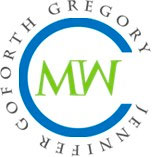Yes, Writers Can Be Math People: How to Effectively Use Math and Statistics in Content Marketing Writing
Like many writers, I have always joked that I am not a math person. And I honestly believed it. But after hearing fellow writer Laura Laing speak at the ASJA conference last year on using math and statistics in writing, I realized that everyone, even me, could be a math person. Over the past year, I have used many of her techniques in content marketing deliverables and realized that using statistics and math in content marketing is especially effective because many times it backs up the brands messaging by an external source. But I always quickly realized how important it is to understand how to use the data to correctly present the information and the facts.
Laura recently released a fantastic new book, called Math for Writers, and I asked her to share some of her tips for content marketing writers.
Jennifer: How can math and statistics help strength a content marketing deliverable?
Laura: Writing is a bit of a sales job. We need to get readers interested and keep them reading. In that way, it’s important to reach as many readers as possible, and fact is, some readers like numbers. In addition, numbers can help legitimize a claim. Saying that most people watch television on the weekends is a lot less compelling than actually weaving Nielsen ratings data into the narrative. The good and bad news is that we’re living in an age of Big Data. This is good because you can find numbers for just about anything. This can be bad, because not all of these numbers are reliable.
Jennifer: Where can writers find studies and statistics on their topic? Do you have any go-to sources or tips for searching?
Laura: If you have a specialty, you really do need to know the reliable data collectors in that field. These may be government agencies, universities, think tanks, or research agencies. Your client might be able to suggest some of their trusted statistical sources. (In fact, it’s probably a good idea to ask as a matter of principle.) Federal and state government agencies track a great deal of demographic and scientific data. Googling a few key terms can bring up those sources. Asking for ideas from other writers or experts is another good idea.
But it’s also important to recognize that sometimes the data just isn’t there. In writing an example for my book, I wanted to know how many people were members of book clubs in the country. It seemed like a reasonable idea, but I never found anything that I felt was truly reliable. Perhaps I overlooked something, but after a couple of days, I decided it was time to give up the ghost.
Jennifer: What do writers need to consider when reviewing studies and statistics?
Laura: First, if you see a statistic quoted in a news article, find the original source. On the way from a study to a reported piece, numbers can become distorted, either accidentally or on purpose. I wish I could say differently, but there’s a real numeracy issue in our nation’s newsrooms, and as a result statistics often go misreported.
But looking at the original study might make your head swim. In my book, I outline how to approach a study—by reading the abstract first and taking notes, reviewing charts and writing down any questions you have. Don’t be afraid to contact the study authors themselves. They’re usually very happy to walk interested writers/reporters through their results.
Perhaps the most important step is to check the veracity of the study itself. In my book, I offer details about sample size, question types (for polls), and sampling methods that every writer should know. Just because a big organization published the results doesn’t mean the study or research was well conducted. This is a prime example of garbage in, garbage out. And it’s the writer’s job to vet the study before deciding to include the results in a piece.
Jennifer: Any tips for including math into an article, whitepaper or blog post?
Laura: This is my favorite part! This is where writers have the opportunity to use their tremendous talents to make cold, hard numbers come alive. Depending on the tone of your piece and its audience, you can develop metaphors that help readers visualize large numbers. You can also create charts and graphs, using simple tools in Excel.
As always, though, it’s really important that the creativity you add does not distort the numbers themselves or make them even more difficult to understand. Metaphors should be relevant and easily understood by most readers. (And please avoid cliches like stacks of dollars or putting football fields end to end.) It’s critical to watch the scale of charts and graphs. Also make sure that the graph you have chosen is the best one for the job.
Jennifer: Anything else that you would like to add?
Laura: I’ll bet most folks don’t know the difference between arithmetic and mathematics. Multiplying to find the tip on a dinner tab is arithmetic. Taking 10% of the bill and doubling it to find the tip is mathematics.
In short, math is problem solving, and that’s where writers can really dig in and find their groove. We’re used to being creative, to telling stories that on their surface seem boring or unimportant, to convincing readers that they should care about something. Math is simply another tool that writers can use to make all of that happen.

